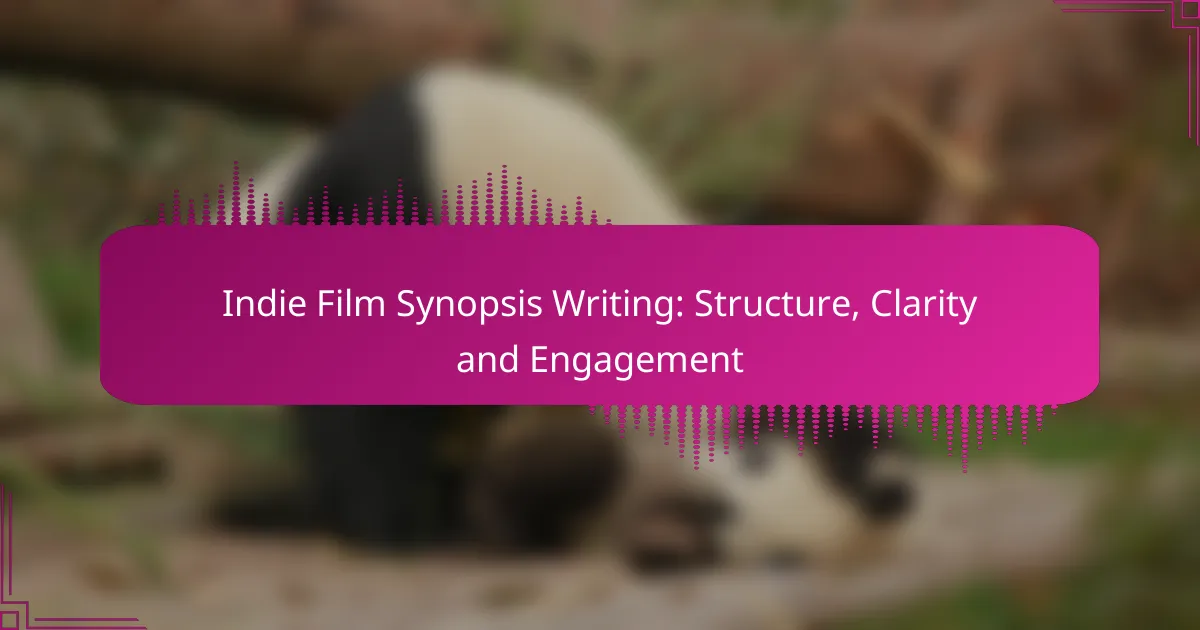Writing an engaging indie film synopsis requires a focus on clarity and structure to effectively capture the essence of your story. By incorporating essential elements such as a compelling logline and a clear three-act framework, you can intrigue potential viewers and industry professionals alike. Avoiding common pitfalls like complex language and lack of clarity will further enhance your synopsis, making it a powerful tool for showcasing your film.
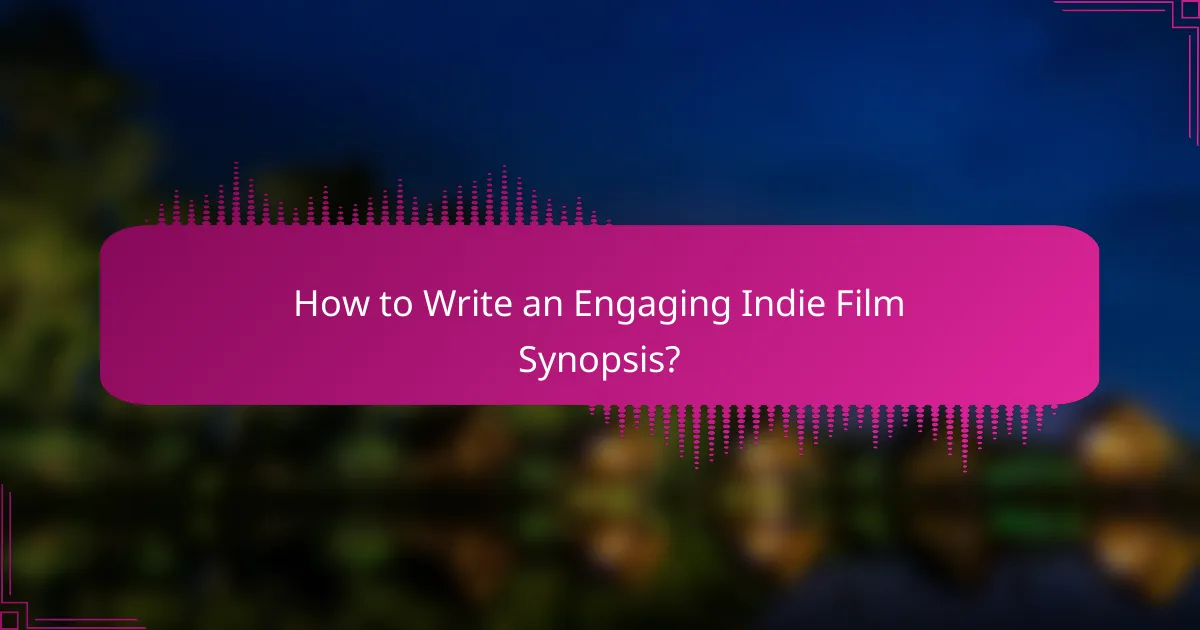
How to Write an Engaging Indie Film Synopsis?
To write an engaging indie film synopsis, focus on capturing the essence of the story while making it intriguing to potential viewers. A well-crafted synopsis should clearly convey the main themes, character development, and overall tone of the film.
Focus on core themes
Identifying and emphasizing the core themes of your film is essential for creating a compelling synopsis. Themes such as love, loss, redemption, or identity can resonate deeply with audiences and provide a clear framework for your story.
Consider using a few sentences to encapsulate the central conflict or message. For example, if your film explores the theme of redemption, highlight how the protagonist seeks forgiveness and personal growth throughout the narrative.
Highlight character arcs
Character arcs are crucial in engaging viewers, as they illustrate growth and transformation. In your synopsis, briefly outline the main characters and their journeys, showing how they evolve in response to the story’s challenges.
For instance, you might mention how a shy artist learns to express themselves through their craft, or how a troubled detective confronts their past to solve a case. This not only adds depth but also invites the audience to invest in the characters’ journeys.
Use compelling language
The language used in your synopsis should be vivid and evocative, drawing readers in and sparking their interest. Utilize strong verbs and descriptive adjectives to paint a picture of the film’s tone and atmosphere.
Avoid clichés and generic phrases; instead, aim for originality. For example, instead of saying “a thrilling adventure,” you might describe it as “a heart-pounding quest through the shadows of a forgotten city.” This helps create a unique voice that stands out.
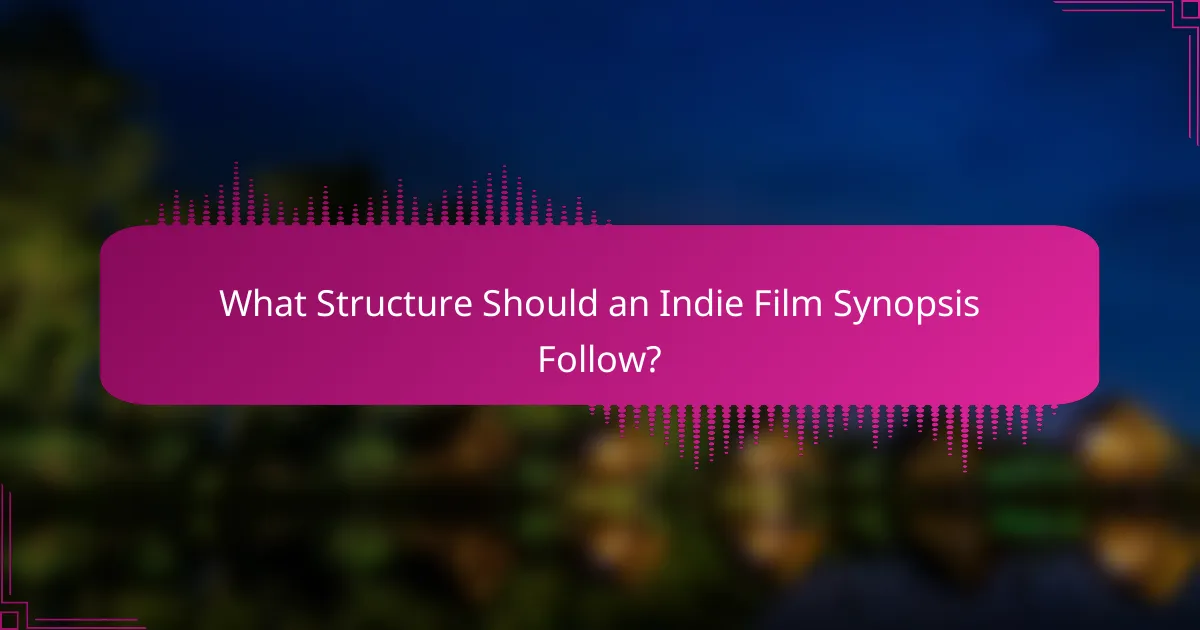
What Structure Should an Indie Film Synopsis Follow?
An indie film synopsis should follow a clear structure that includes essential elements like the three-act framework, a compelling logline, and a concise character introduction. This organization helps convey the film’s essence effectively, making it engaging for potential viewers and industry professionals alike.
Three-act structure
The three-act structure is a foundational storytelling framework that divides the narrative into setup, confrontation, and resolution. In the synopsis, clearly outline these acts to provide a roadmap of the plot’s progression.
For example, in the setup, introduce the main conflict and characters. The confrontation should highlight the challenges faced, while the resolution wraps up the story, showcasing character growth or change. This structure keeps the synopsis focused and engaging.
Logline inclusion
A logline is a one or two-sentence summary that captures the essence of the film, including the protagonist, their goal, and the central conflict. Including a strong logline at the beginning of your synopsis grabs attention and sets the tone for the rest of the content.
For instance, a logline might read: “A young artist struggles to find her voice in a city that demands conformity, leading her on a journey of self-discovery.” This succinctly conveys the main character’s journey and the stakes involved.
Character introduction
Introducing key characters in the synopsis is crucial for establishing emotional connections with the audience. Focus on the protagonist and any significant supporting characters, providing brief descriptions that highlight their motivations and relationships.
For example, you might describe the protagonist’s background and aspirations, while also mentioning an antagonist or mentor who influences their journey. This helps readers understand the dynamics at play and fosters interest in the characters’ arcs.
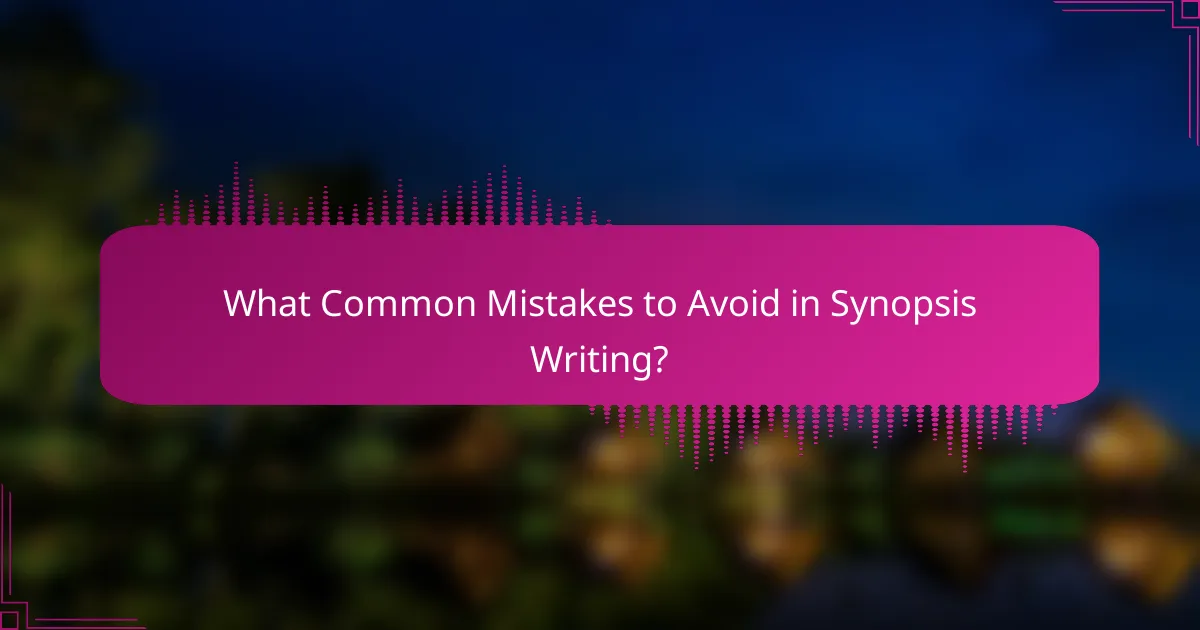
What Common Mistakes to Avoid in Synopsis Writing?
When writing a synopsis, avoiding common mistakes is crucial for effectively conveying your film’s essence. Key pitfalls include using overly complex language, lacking clarity, and ignoring your target audience.
Overly complex language
Using overly complex language can alienate readers and obscure your film’s message. Aim for simplicity and directness, employing straightforward vocabulary that conveys your ideas clearly. For instance, instead of saying “utilize,” opt for “use.” This keeps your synopsis accessible.
Consider the average reader’s familiarity with film jargon. If your synopsis is filled with technical terms or convoluted phrases, it may confuse rather than engage. Strive for a balance between creativity and clarity.
Lack of clarity
A lack of clarity can lead to misunderstandings about your film’s plot and themes. Ensure that your synopsis clearly outlines the main storyline, character motivations, and key conflicts. A well-structured synopsis typically follows a beginning, middle, and end format.
Use active voice and concise sentences to enhance clarity. For example, instead of saying, “The protagonist is faced with challenges,” say, “The protagonist faces challenges.” This small change can significantly improve readability.
Ignoring target audience
Ignoring your target audience can result in a synopsis that fails to resonate. Understand who you are writing for—whether it’s festival judges, producers, or general viewers—and tailor your language and content accordingly. Highlight elements that will appeal to that specific group.
For example, if your target audience is young adults, focus on themes relevant to their experiences, such as identity or relationships. This targeted approach can make your synopsis more engaging and effective in capturing interest.

How to Tailor Your Synopsis for Film Festivals?
To effectively tailor your synopsis for film festivals, focus on the specific requirements and preferences of each festival while highlighting the unique aspects of your film. A well-crafted synopsis can significantly enhance your chances of selection by engaging festival programmers and audiences alike.
Research festival guidelines
Each film festival has its own set of guidelines that dictate the preferred format and content for synopses. Start by visiting the festival’s official website to gather information on word count limits, submission deadlines, and any specific themes or genres they prioritize.
Pay attention to examples of successful synopses from past festivals to understand what resonates with their audience. This research will help you align your synopsis with the festival’s expectations and increase your chances of acceptance.
Emphasize unique elements
Your synopsis should highlight what makes your film stand out. Focus on unique characters, innovative storytelling techniques, or compelling themes that differentiate your film from others in the same genre.
Consider using strong, evocative language that captures the essence of your film. For instance, instead of saying “a story about friendship,” you might say “a gripping tale of loyalty that tests the bonds of friendship in the face of adversity.”
Include genre-specific details
Incorporating genre-specific details can help festival programmers quickly identify the target audience for your film. Clearly state the genre and any sub-genres, as well as key elements typical of those genres, such as tone, pacing, and style.
For example, if your film is a thriller, mention suspenseful elements and plot twists that will engage viewers. If it’s a romantic comedy, highlight the humor and emotional moments that define the genre. This specificity will make your synopsis more relatable and appealing to festival selectors.
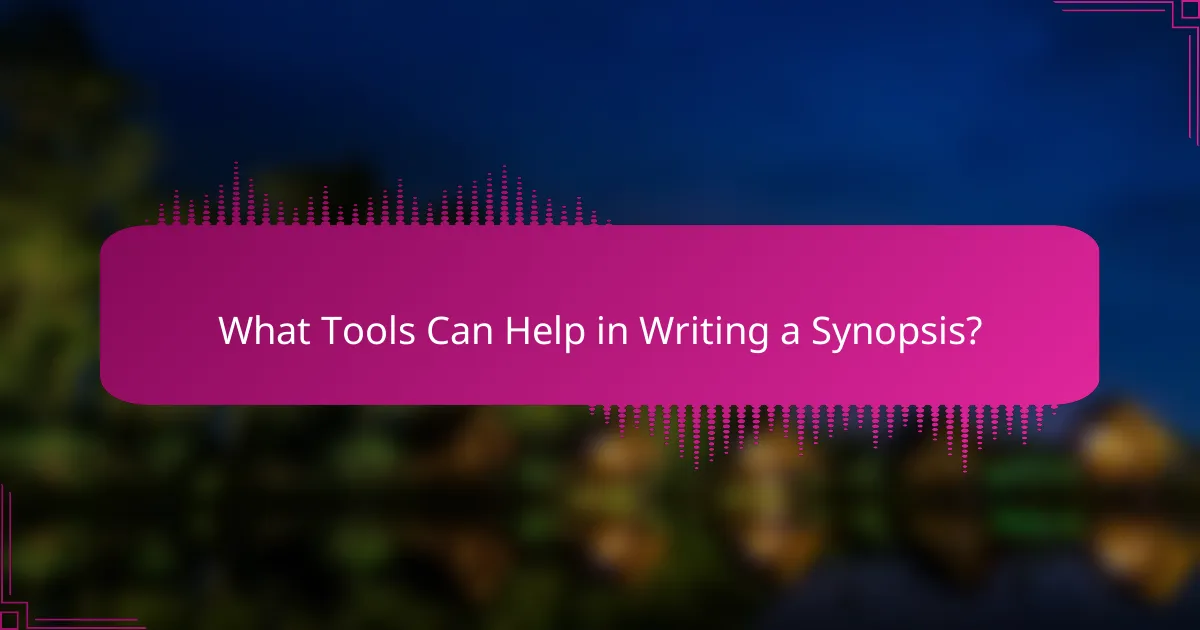
What Tools Can Help in Writing a Synopsis?
Several tools can significantly enhance the process of writing a film synopsis by improving clarity, organization, and formatting. Utilizing dedicated software can streamline your workflow and help you focus on crafting an engaging narrative.
Celtx for scriptwriting
Celtx is a popular tool for scriptwriting that offers features specifically designed for film projects. It allows users to create and edit scripts in a collaborative environment, making it easier to gather feedback from team members.
With Celtx, you can easily format your synopsis according to industry standards, ensuring that your document is professional and polished. The software also includes templates and outlines that can guide you in structuring your synopsis effectively.
Final Draft for formatting
Final Draft is widely regarded as the industry standard for script formatting. It automates the formatting process, allowing writers to focus on content rather than layout. This tool is especially useful for ensuring that your synopsis adheres to professional standards.
Additionally, Final Draft offers features like collaboration tools and revision tracking, which can be beneficial when working with others. By using this software, you can ensure that your synopsis is not only well-written but also visually appealing.
Scrivener for organization
Scrivener is an excellent tool for organizing your writing projects, including film synopses. Its flexible structure allows you to break down your synopsis into manageable sections, making it easier to develop each part thoroughly.
With Scrivener, you can keep notes, research, and drafts all in one place, which helps maintain focus and coherence. This organization can lead to a more compelling and cohesive synopsis, as you can easily reference your ideas and materials as you write.
